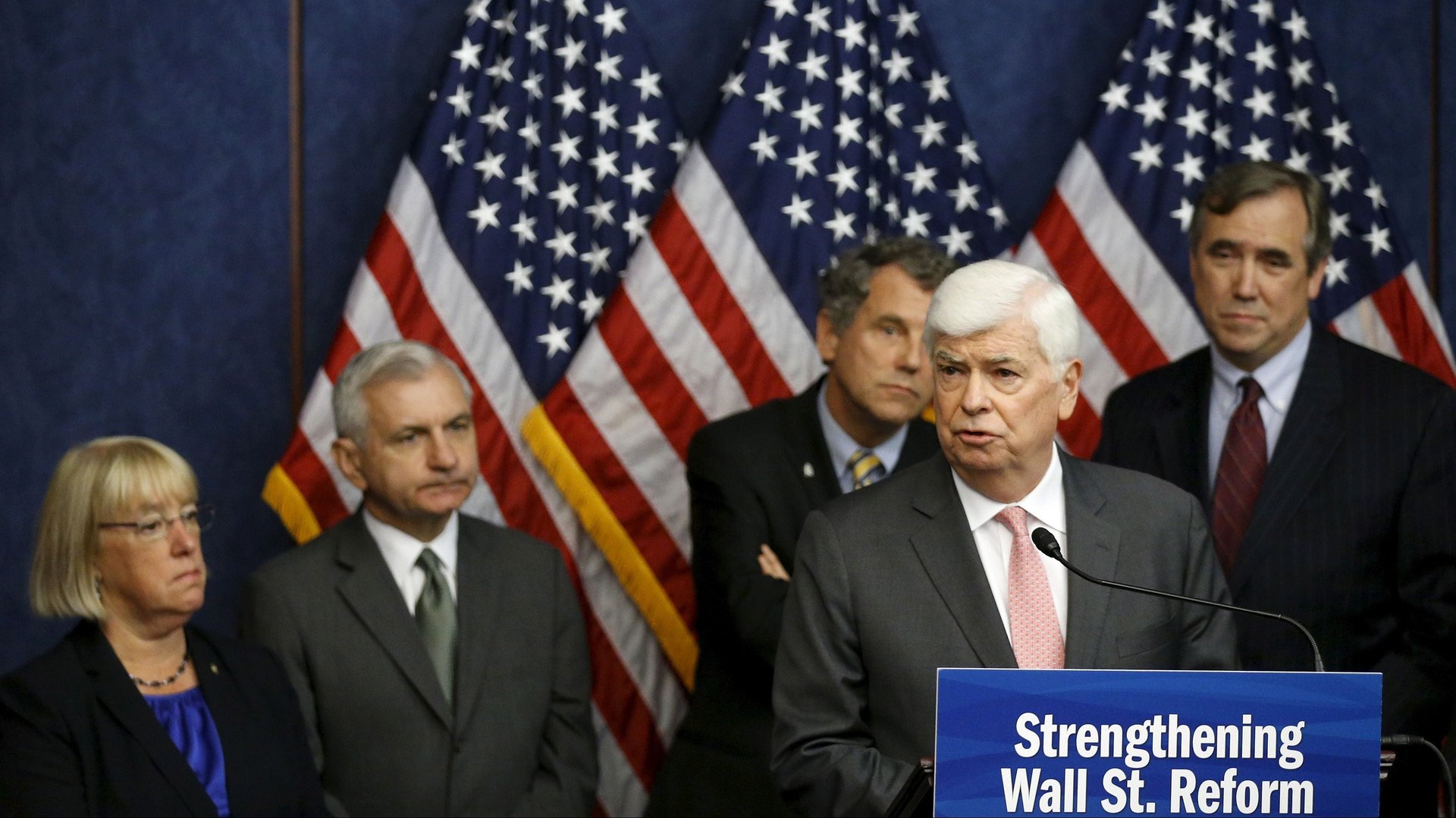The number of US banks that are “too big to fail” just shrank
Republicans have been gunning to dismantle the 2010 Dodd-Frank Act from the moment it came into existence. Donald Trump promised to do “a big number” (paywall) on it, calling the Wall Street reform act a “disaster.”


Republicans have been gunning to dismantle the 2010 Dodd-Frank Act from the moment it came into existence. Donald Trump promised to do “a big number” (paywall) on it, calling the Wall Street reform act a “disaster.”
Now, just a decade after the global financial crisis sent the US into a tailspin, both parties are getting their wish. Yesterday, Congress approved a bill to dismantle key parts of the 2010 landmark legislation designed to regulate banks in the aftermath of the 2008 crisis. While some Democrats, like senator Elizabeth Warren, believe the new legislation props up banks at a time when Wall Street is already making record profits, the bill had bipartisan support. After passing through the Senate 67 to 31 earlier this year, the House voted it through, 258 to 159.
Turns out, the rare thing Democrats and Republicans can agree on is giving banks a helping hand.
What is the Dodd-Frank Act ?
The Dodd-Frank Wall Street Reform and Consumer Protection Act was a colossally large, 2,300-paged piece of financial reform. The act created a number of new government agencies, like the Financial Stability Oversight Council and the Consumer Financial Protection Bureau, entities Trump has vociferously critiqued as decimating financial institutions. The act also curtailed speculative trading, effectively separating the investment and commercial sides of banks. And it eased the financial and legal lives of whistleblowers.
Many of those unprecedented, tough standards will remain intact. What the new bill takes a hammer to is which banks, if any, are thought of as systematically important financial institutions—Dodd-Frank lingo for too big to fail. In the newest version of the bill, only banks with $250 billion or more in assets fall under that jurisdiction. That’s fewer than 10 banks (paywall) in the US.
The new bill, if signed by the president, is a boon for smaller banks. In the original Dodd-Frank act, banks with $50 billion or more in assets qualified as systematically important, forced to face routine stress tests and other regulatory oversight measures by the Federal Reserve. Regulations were time-consuming and costly, banks argued, slimming profits needlessly. And the downside of failing a stress test was bad news for bank shareholders.
To be clear, the bill lightens the load on far more than small, local credit unions and community banks. Far-reaching financial institutions like BNP Paribas, Credit Suisse, Barclays, and American Express all hold less than $250 billion in assets.
More symbolic than anything else
Still, the new bill may be largely symbolic. Tougher regulatory standards on banks that fall in the $100 to $250 billion asset class won’t disappear for 18 months, and even after, the Fed has leeway to conduct periodic stress tests and create tailored regulatory standards for medium-sized banks.
Even Barney Frank, the former representative who co-authored the bill, has admitted that the $50-billion floor was a little low, though he believes the current bill is too lenient, wishing they’d drawn the line in the sand at $125 billion in assets.
Still, while Frank insists he would have voted against the regulatory rollback if he were still on the floor, he has conceded that the bill doesn’t weaken regulations for the very largest of banks.
Whether the latest version of Dodd-Frank maintains its muscle, though, is ultimately up to the Federal Reserve, which gets large discretion in determining the size and scope of regulation for medium and small banks. In his senate confirmation hearing, Fed chair Jerome Powell let on just what he thought of the current necessity of Dodd-Frank legislation. “Generally speaking I think the financial system is quite strong,” he told senators. When asked if he thought any US banks were still too big to fail, he added, “I would say no to that.”